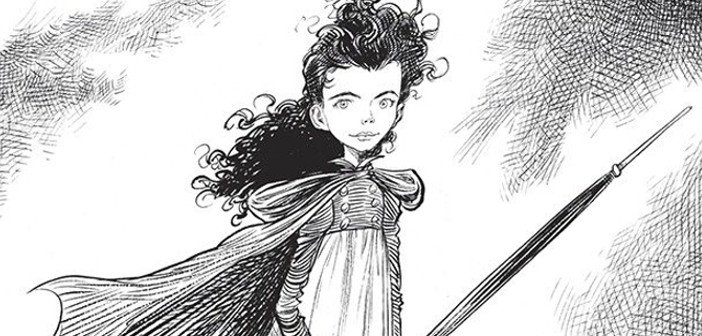The Lit Review |31| Bizzare Bloomsday
Bizzare Bloomsday
Bloomsday, which takes place each year on the 16th of June, celebrates a day in the life of Leopold Bloom, the famous fictional flâneur, who idled his way through the streets of Dublin on this day in 1904. As he went, he reflected on life, and was confronted with various characters, both real and imagined. His journey, as described in James Joyce’s famous work of art, Ulysses, will be honoured once again this year with a number of events taking place around Dublin (and further afield) from the 11-16th of June. This year a Bizarre Brunch, in conjunction with Happenings, will pop up on North Great George’s Street on Sunday, 14th of June. If brunch isn’t your thing you can always opt for the Bloomsday breakfast, or scoot along to see two great dandies, Stephen Fry and David Norris, in conversation. You can take part in a Joycean pub crawl, or the less boozy literary walking tours where you will trace the footsteps of Leopold Bloom. The week is packed with excellent events; you can even don a lovely cap or sport a parasol. Take a look at the full list of events here.
Frank O’Connor Short Story Award
Six authors have made the shortlist for the Frank O’Connor Short Story Award. The list this year is comprised of three Americans, a Chilean, a New Zealander and a Welsh author, all in the running for the €25,000 prize, which makes the Frank O’Connor Award the world’s richest short story prize. Irish writer Colin Barrett was selected last year, for Young Skins. Patrick Cotter, Artistic Director of the Munster Literature Centre, who selected the jury this year said: ‘Every year we receive more and more entries. It is striking to note that we have three titles this year from small independent presses. It demonstrates that the dissemination of good writing is vital at a grassroots level.’
A Year for Women
Let’s make 2018 the year of books for women. Last week in the Lit Review we discussed the theory that women appear to have ‘literary cooties’, according to a study undertaken by writer Nicola Griffith, who found that for the last fifteen years, six of the world’s most prestigious literary awards have not favoured women as their winner. It appears those who judge major literature prizes feel women who write, or women (or men) who write about women, do not make the grade when it comes to winning things. With that great news in mind, Kamila Shamsie has proposed that 2018 will be a year for women, during which time only books written by women will be published. It seems this proposal is not so outlandish; already, small press And Other Stories have accepted the challenge. Publisher Stephan Tobler said: ‘this year we have done seven books by men and four by women… We have a wide range of people helping us with our choices, and our editors are women… and yet somehow we still publish more books by men than women.’ The commitment to publishing only books by women is forward thinking and certainly achievable, and if more follow And Other Stories, it could be one way to nurture a greater interest and appreciation of women and their words.
Children’s Laureate

Chris Riddell has been chosen as the newest UK Children’s Laureate, which is great news. The talented illustrator has been making beautiful art since the 80s and more recently has worked with the likes of Neil Gaiman (illustrating the stunning Sleeper and the Spindle) and Russell Brand, for whom Riddell provided some lovely sketches to brighten up his retelling of the Pied Piper of Hamlet. Riddell also won the Costa Children’s Book Award for his own creation, Goth Girl. Riddell has already begun his ‘Laureate Log’, where he will post insights and reflections each day over the course of his two year tenure. He got off to a great start, saying: ‘wherever there are words let there be pictures… don’t think about it, just do it… Everybody Can Draw.’ The Guardian has made a lovely bundle of some of Riddell’s most charming illustrations. Take a look here.
Fantastical Pets
Take a look at these ten Fantastical Pets. Nana from Peter Pan has made it onto the list despite being distinctly non-magic. Still, she was really great, so I don’t mind. I do think that ten pets just doesn’t begin to cover the extent of the wonderful magical creatures that we fell in love with as children and continue to love as adults. Let us know your top ten.
Transgender Children’s Books

Transgender children’s books can help to remove the stigma that still exists when it comes to the transgender community. Sam Matthews, who has transitioned from female to male, is part of an emerging group of writers who create stories that focus on transgender issues. It seems children’s literature is racing to address these previously tricky questions. David Levithan, the publisher and editorial director at Scholastic, says: ‘As our culture is starting to acknowledge transgender people and acknowledge that they are part of the fabric of who we are, literature is reflecting that.’ One Scholastic writer, Alex Gino, is genderqueer, identifying as a person who falls outside of the male/female binary. Alex has written about George, a young boy who identifies as female, and auditions to play the role of Charlotte in her school’s adaptation of Charlotte’s Web so her school mates might begin to recognise her wish to be female. Scholastic aims to make the book a great success in the mainstream, having sent 10,000 copies to teachers and librarians for their feedback which was largely positive. Gino explains that things are changing and children are exposed to these issues. When writing the first draft of George, Gino had not even referred to the lead character as ‘transgender’: ‘I was like, how would a 10-year-old ever come across that word, but now I’m like, of course they would.’

